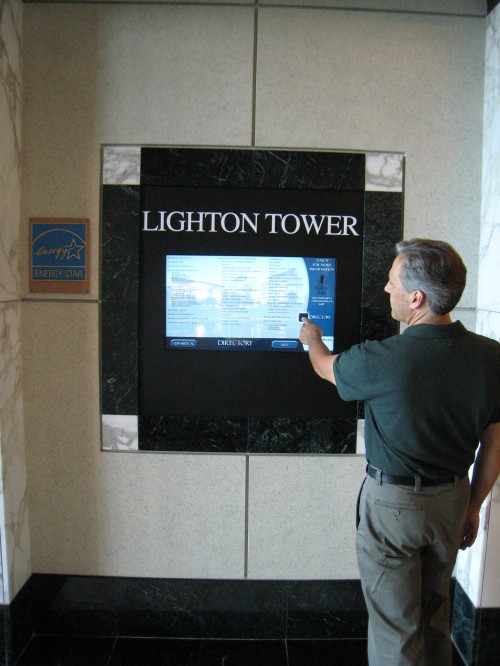By David Little
One trend that is still emerging in digital signage is the marriage of the medium to the kind of touch-based interactivity many people have come to appreciate through their personal mobile devices. In many environments, such as retail venues, the sum of these technologies holds greater potential for marketers than either of the individual parts.
Interactive digital signs, self-serve kiosks and other ‘combo systems’ tend to first capture the attention of people nearby—generally by playing back compelling but linear content, like an enticing commercial ‘spot’ or helpful product information—and then switch to an interactive mode when triggered by external input, such as the touch of a finger, the mere presence of a passerby or permission-based identification (ID) recognition.
More marketing punch
So, an interactive system is similar to a standard digital sign in terms of playing back a pre-arranged sequence of communications elements, including video files, web graphics, text, animation and real-time content feeds. These multimedia staples of digital signage can be used to effectively entice people to interact with a screen, with much more marketing ‘punch’ than a typical kiosk’s splash screen.
Then, once a passerby touches the panel or steps within a given proximity of it, the sign can automatically interrupt the linear content playback to display a touch-based interface—often resembling that of a smartphone—that lets the user touch ‘hot spots’ on the screen to launch and navigate through a branching presentation.
In a retail setting, this presentation might let shoppers find such information as product comparisons, pricing, availability and reviews. Bringing these items together to act in unison can have a number of benefits for the store.
Automating the sales process
An interactive display system in an automotive service centre, for example, could send an inquiry to the store’s web server to access a database of tires, as specified by or recommended for each car manufacturer. By matching information entered by the customer about his/her car with the recommendations in the database, the system could check the store’s inventory for the right products and then retrieve and present information about availability, pricing and related services to the shopper standing at the screen (see Figure 1).
The goal is to help automate the sales process. With the precision of a talented in-store associate, the interactive digital signage can augment the shopping experience, cross-promote additional products and provide loyalty program incentives, all at once.
When presenting search results, for example, the system could also ask the shopper to enter his/her name and address and grant permission to be notified of future specials. With that information saved on the server, the automotive retailer’s marketing department can automatically send out coupons when the shopper’s vehicle will be due for its next oil change.






